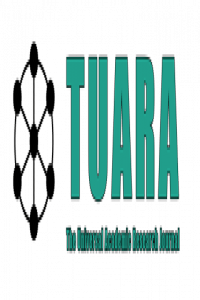Availability and Use of Visual Teaching and Learning Materials in Teaching Geography at Nassarawa Education Zonal Office
The present study aimed at finding out if there are adequate visual teaching and learning materials for teaching Geography in Nasarawa Local Government Area of Kano State, and if these materials were been effectively and judiciously utilized by the teachers in teaching geography. The population of the study covers five secondary schools from five wards in Nasarawa L.G.A where a sample of 25 geography teachers both male and female was drawn. A questionnaire was used for the data collection while the data collected were analysed using the frequency and percentage distribution Table. The gathered data shown that visual materials were inadequate for the effective teaching of geography in Nasarawa L.G.A and the few available visual materials have not been effectively and judiciously utilized to teach geography. The study has made certain recommendations that important visual materials like barometer, thermometer, rain gauge, wind vane, computers, projectors, and geography laboratory should be provided for the effective teaching and learning of geography, and the government should ensure that seminars and workshops are organized for geography teachers to make them aware of the importance of using visual materials and motivate them towards discharging their duties effectively.
Anahtar Kelimeler:
Geography, Geography Curriculum, Visual Materials, Kano, Nigeria
Availability and Use of Visual Teaching and Learning Materials in Teaching Geography at Nassarawa Education Zonal Office
The present study aimed at finding out if there are adequate visual teaching and learning materials for teaching Geography in Nasarawa Local Government Area of Kano State, and if these materials were been effectively and judiciously utilized by the teachers in teaching geography. The population of the study covers five secondary schools from five wards in Nasarawa L.G.A where a sample of 25 geography teachers both male and female was drawn. A questionnaire was used for the data collection while the data collected were analysed using the frequency and percentage distribution Table. The gathered data shown that visual materials were inadequate for the effective teaching of geography in Nasarawa L.G.A and the few available visual materials have not been effectively and judiciously utilized to teach geography. The study has made certain recommendations that important visual materials like barometer, thermometer, rain gauge, wind vane, computers, projectors, and geography laboratory should be provided for the effective teaching and learning of geography, and the government should ensure that seminars and workshops are organized for geography teachers to make them aware of the importance of using visual materials and motivate them towards discharging their duties effectively.
___
- Abdullahi, M. (1997). An Introduction to Media and Methods. Kano: Gidan Dabino Publishers.
- Aderogba, K., A., (2012). Improvising Teaching and Learning Aids in Classes of Geography in Ogun State (Nigeria) Senior Secondary School (SSS). International Research Journal, Vol. 3 (8) pp 692-697
- Adeyanju, T. K. (1978). Teaching Literature and Human Values in ESL. ELT Journal, Vol. 32. Pp. 133-138
- Cognitive Design Solutions, (2003). Learning Theories. Retieved11-12-2014 from CDS website:www.cognitivedeesignsolutions.com/instrucation/learningtheories
- Dale, E., (1963). Audio Visual Methods in Teaching (Revised Edition). New York. The Dryden Press. Drost, E. A. (2011). Validity and Reliability in Social Science Research. Education Research Perspective Journal. Vol. 38, No.1 Pp. 105-123
- Ebert, K. A. (1963). Behaviourism Vs Constructivism in the Technological Secondary Education Classroom. Retrieved 11-8-2016 from EdTech’s Website:http://site.google/a/boisestate.edu/edtechtheoiries/behaviourism-vsconstructivism-in-the technological-secondary-educationclassroom-1
- Federal Republic of Nigeria (1981). National Policy on Education
- Federal Republic of Nigeria. (1985). National Curriculum for Senior Secondary School, Vol. 6
- Graham, G. (2010), “Behaviourism”, In Edward Z.(Ed.). The Stanford Encyclopedia of Philosophy (2010 ed.). Retrieved 11-8-2016 from url:http://plato.stanford.edu.archieves/fall2010/entries/behaviorism/
- Instructional Design Central. (2004). Instrustructional Design models. Retrieved 11-8- 2016 from www.instructionaldesigncentral.com/htm/idc_instuctionaldesignmodels.htm
- Krejcie, R. V. and Morgan D. W. (1970). Determining Sample Size for Research Activities: Educational Psychology Measurement Journal Vol. 30. Pp 607-610
- Lawal, R. M., Dora, A. and Julius, G. (2014). Secondary School Students’ Attrition in Geography in Esan West Local Government Area, Edo State, Nigeria: The Teachers Perspective. Sky Journal of Education Research, Vol. 2 (4), Pp 028-036
- McNeeley, R. S. (2007). Learning Theories in Early Childhood Classroom Learning. Retrieved 11-8-2016 from www.web.utk.edu/~rmcneeleeyclassrom/theories/html.
- Milad, A. C. (2013). Risk Evaluation and Mitigation in Domestic Photovoltaic Projects According to the UK Climate policy. Retrieved 20-8-2016 from http://www.google.com/m?q=katzer+percentage+milad&client=ms-opera-miniandroid&channel=new
- Okunrotifa, P. O. (1970). Programmed Learning in Teaching of Geography. West African Journal of Education, Vol 14 (30), 283-293
- Olowu, F. A. (2005).Educational Technology, A Conceptual Guide, Ijebu OdeGodolom Books.
- Oyesola G., O., (1991) Criteria for Selecting Audio-Visual Materials in Geography Teaching in Post Primary Institution. Ilorin Journal of Education. Vol. 11. Retrieved 11-8-2016 from http://unilorin.edu.ng/journals/education/ije/dec1991/index.php
- Sabitu, A. O. and Nuradeen, B. B. (2010). Teachers’ Attributes as Correlates of Students’ Academic Performance in Geography in the Secondary Schools in Ondo State, Nigeria. Pakistan Journal of Social Sciences Vol.7, Pp. 388-392
- Shapiro, J. K. (2008). Percentage Frequency Distribution. Retrieved 11-12-2014 from Sage Research Methods’ Website:http://srmosagepub.com/view/enclopedia-of-surveyresearch-methods/n372.xml
- Sheriffudin, S. R. (2007). Design of Instructional Materials for Teaching and Learning Purpose: Theory into Practice. Malaysia Education Deans’ Journal, Vol.1 pp. 98-110
- Sherigill, H., R., (2012). Experimental Psychology. Delhi, PHI Learning PVT. LTD.
- Sofowora, O. A. and Egbedokun A. (2010). An Empirical Survey of Technology Application in Teaching Geography in Nigerian Secondary Schools. Ethiopian Journal of Environmental Studies and Management Vol. 3 No. 1, 2. Pp 46-54
- United Nations (2005) Millennium Development Goals. New York: UN Retrieved 11-8-2016 from http://www.un.org/apps/neas/story/asp?
- WAEC (2007). West Africa Examinations Council, Chief Examiners’ Report May/June SSSCE pp. 20-24
- Wikipedia (2014). ADDIE model, Retreived 11-8-2016 from http://en.m.wikipedia.org/wiki/addie_model
- Wikipedia (2014).Descriptive Research. Retreived 11-12-2014 from http://en.m.wikipedia.org/wiki/descriptive_research
- World Bank (2004). ICT Report. Retrieved 11-8-2016 from http://www.worldbank.org/education/pdf/ict-report-oct-04
- ISSN: 2717-9133
- Başlangıç: 2019
- Yayıncı: Necmettin Erbakan Üniversitesi
